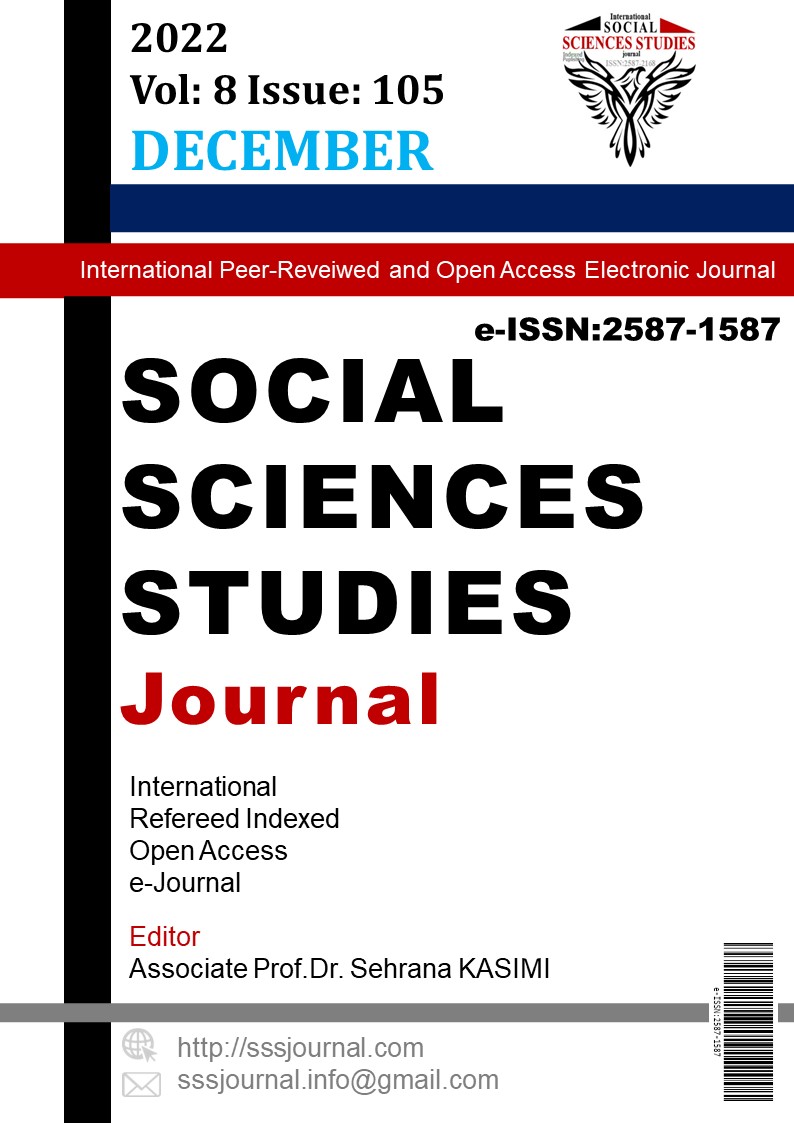Author :
Abstract
Güneydoğu Anadolu bölgesinde yer alan Şanlıurfa’da sulama olanaklarının artması nedeniyle pamuk vb. ürünlerin üretiminin daha fazla yaygınlaşması, iklim değişikliği nedeniyle sulanamayan alanlarda yaşanan kuraklık, buğday tarımında verimi ve kaliteyi dolayısıyla üretici gelirlerini olumsuz yönde etkilemektedir. Üretici gelirini etkileyen diğer bir faktör ise ürün satış fiyatıdır. Bu çalışmanın amacı, buğday üretim faaliyetine etkili olan risk faktörlerini saptamak ve üreticinin gelirini artırmaya yönelik önerilerde bulunmaktır. Araştırmada 180 çiftçi anketi kullanılmış olup betimsel istatistiklerden frekans ve yüzde dağılım kullanılmıştır. Üreticilerin ortalama 49.3 yaşında olduğu, akademik olarak ortalama 6,51 yıl eğitim aldığı, ortalama 25.31 yıllık bir deneyiminin olduğu ve ortalama 118,20 da alanda buğday üretimi yaptığı belirlenmiştir. Bağımsız iki grup arası farkların belirlenmesi için tek-örnek t testi ve bazı değişkenler arasında ilişkinin incelenmesi için korelasyon analizi yapılmıştır. İşletmelerin buğday üretim faaliyeti sonucu elde edilen gelir ile satış zamanı arasında korelasyon analizi yapılmış ve aralarında aynı yönlü iyi düzeyde bir doğrusal ilişkinin olduğu (r= 0,676) belirlenmiştir. Çiftçilerin buğday tarımında risk faktörleri ile ilgili düşüncelerini belirlemeye yönelik likert tutum ölçeği kullanılmış olup elde edilen verilerin güvenilirliği Cronbach's Alpha katsayısı 0, 72 olarak belirlenmiştir. İşletmelerde üretilen buğdayın önemli bir kısmının (%86.1) hasattan sonra ve fiyatların en uygun seviyeye ulaşmasını beklemeden, %13,9’unun ise planladıkları dönemde buğdayı sattıkları tespit edilmiştir.
Keywords
Abstract
Due to the increase in irrigation opportunities in Şanlıurfa, which is located in the Southeastern Anatolia region, cotton etc. Widespread production of crops, drought in areas that cannot be irrigated due to climate change negatively affect the yield and quality of wheat agriculture and thus the income of producers. Another factor affecting producer income is product sales price. The purpose of this study is to identify the risk variables impacting wheat production activity and to offer recommendations for raising the producer's revenue. 180 farmer questionnaires were employed in the study, and frequency and percentage distribution were taken using descriptive statistics. The farmers are estimated to be 49.3 years old on average, have 6.51 years of formal education, 25.31 years of experience, and produce wheat at a rate of 118.20 decares on average.One-sample t-test was used to determine the differences between two independent groups and correlation analysis was performed to examine the relationship between some variables. Correlation analysis was made between the income obtained as a result of the wheat production activities of the enterprises and the sales time and it was determined that there was a good linear relationship (r= 0.676) between them. The attitudes of farmers toward risk factors in wheat production were gauged using a Likert attitude scale, and the reliability of the data obtained was determined as 0.72 Cronbach's Alpha coefficient. It has been determined that a significant part of the wheat produced in the enterprises (86.1%) is sold after the harvest and without waiting for the prices to reach the most appropriate level, while 13.9% of them sell the wheat in the planned period.
Keywords
- 1. Arısoy, H.& Oğuz, C. (2005). Tarımsal Araştırma Enstitüleri Tarafından Yeni Geliştirilen Buğday Çeşitlerinin Tarım İşletmelerinde Kullanım Düzeyi ve Geleneksel Çeşitler ile Karşılaştırmalı Ekonomik Analizi – Konya İli Örneği, T.C. Tarım ve Köyişleri Bakanlığı Tarımsal Ekonomik Araştırma Enstitüsü Yayınları, Yayın No: 130, ISBN: 975-407-174-8, Ankara.
- 2. Sevinç, G. (2018). Süt Sığırcılığı Desteği Alan Kooperatif İşletmelerinin Örgütlenmeye ve Kırsal Kalkınmaya Etkisi: Şanlıurfa İli KASDEP Örneği. Harran Üniversitesi Fen Bilimleri Enstitüsü, Doktora Tezi, Şanlıurfa.
- 3. Kara, F.Ö. (2018). Suruç Ovası Üreticilerinin Sulama Bilgilerinin Tarımsal Yayım Açısından Değerlendirilmesi. Harran Üniversitesi, Fen Bilimleri Enstitüsü Tarım Ekonomisi Anabilim Dalı Yayınlanmamış Doktora Tezi, Şanlıurfa. 38-43s
- 4. Kılıç, S. (2016). Cronbachs Alpha Reliability Coefficient. Journal of Mood Disorders 6(1):1, January 2016, DOI: 10.5455/jmood.20160307122823
- 5. Newbold, P. (1995). Statistics for Business and Economics, Fourth Edition, Prentice Hall
- 6. Özçelik, A.; Kayalak, S. & Özer, O. O. (2010). Türkiye’nin Buğday Üretimi İçin Bir Öngörü Modeli: VAR Yaklaşımı. Türkiye IX. Tarım Ekonomisi Kongresi, Şanlıurfa.
- 7. Özdamar, K., 2002. Paket Programlarla İstatistiksel Veri Analizi-1. Kaan Kitabevi, 4. Baskı, Eskişehir.
- 8. Tektaş, S. N., 2008. Lisanslı Depoculuğun Türkiye Tarım Ürünleri Piyasalarına Olası Etkileri: Trakya Bölgesi Örneği. Namık Kemal Üniversitesi, Fen Bilimleri Enstitüsü, Tarım Ekonomisi Anabilim Dalı, Yüksek Lisans Tezi, 13s.
- 9. Tiryakioğlu, M., Demirtaş, B. Ve Tutar, H., 2017. Türkiye’deki Buğday Veriminin Karşılaştırılması: Hatay ve Şanlıurfa İlleri Örneği. Süleyman Demirel Üniversitesi Ziraat Fakültesi Dergisi, 12 (1): 2017 ISSN:1304-9984, Isparta. 56-67s
- 10. TMO, 2018. 2017-2018 Yılı Hububat Raporu. http://www.tmo.gov.tr (Erişim tarihi:01.05.2019)
- 11. TÜİK, 2020. Türkiye makarnalık buğday verileri. https://biruni.tuik.gov.tr/medas/?kn=92&locale=tr (Erişim tarihi: 11.02.2020)
- 12. Anonim, 2020. GAP Bölge Kalkınma Daire Başkanlığı. Güneydoğu Anadolu Projesi Son Durum. http://yayin.gap.gov.tr/pdf-view/web/index.php?Dosya=8cb1457d30 (Erişim tarihi 10 Ekim 2020).





